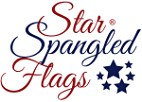Ever heard of the U.S. Flag Code? Nestled in Chapter 1 of Title 4 of the United States Code, it spells out how to fly, display, clean, and handle the American flag in the United States. Many folks don’t know there’s a federal law about it! Even though violations of the U.S. Flag Code aren’t enforced, so you won’t get in trouble for not following it, it’s good manners to respect this law. Let’s dive into the origins and history of the U.S. Flag Code.
How the US Flag Code Was Started
The origins of the U.S. Flag Code can be traced back to June 14, 1923. Prior to that day, there was no legislation governing the American flag. There was still general etiquette that government entities as well as civilians followed when displaying the American flag, but it wasn’t a federal law. This changed on June 14, 1923, however, when a consortium of over 60 organizations led by the National Americanism Commission of the American Legion drafted the country’s first official guidelines for the American flag.
June 14, of course, is national Flag Day in the United States. Held annually on June 14, it commemorates the country’s adoption of the American Flag, which occurred back in 1777. But 1923 had a special Flag Day. It was the first time a set of official rules were created for the American Flag, thus paving the way for the U.S. Flag Code.
Although June 14, 1923 was the date on which the U.S. Flag Code was created, the U.S. Flag Code didn’t become a law until several decades later. It wasn’t until June 22, 1942 when the guidelines were signed into law.
The US Flag Code Today
Even after nearly a century, the U.S. Flag Code is still used to govern the way in which the American flag is flown, displayed, cleaned and handled. And since that time, it has remained largely unchanged. There have been a few modifications to the U.S. Flag, such as the removal of the Bellamy salute, but it’s pretty much the same as the original U.S. Flag Code created back in 1923.
If you’re planning to display the American flag, either privately or publicly, you should follow the guidelines set forth the in the U.S. Flag Code. Doing so ensures that you are honoring the American flag in the best, most respectful manner possible.
You can learn more about the U.S. Flag Code by visiting this link.
Consider Sharing
If this post has helped you, please take a moment to share it with someone you know in your social accounts or email. The more people who know this information, the better America will be.
About the author
Barry Mason is a proud third-generation American whose grandfather served in World War II. Born and raised in small-town Tennessee, Barry developed a deep appreciation for American history and traditions from an early age, learning about the sacrifices made by previous generations. Barry has spent over a decade writing about flag etiquette, patriotic traditions, military history, and the stories behind America's most cherished symbols. When he's not researching the fascinating history of Old Glory, you can find Barry volunteering at veterans' events, coaching youth baseball, or exploring America's national parks with his family. A firm believer in supporting American manufacturing and small businesses, Barry is passionate about celebrating the craftspeople who keep American traditions alive. He lives with his wife and two children in a home where the American flag flies proudly every day. Favorite quote: "Freedom is never more than one generation away from extinction." - Ronald Reagan
